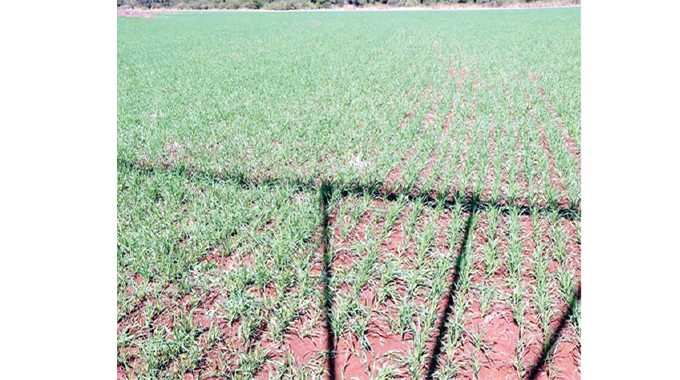
Business Reporter
A TOTAL of 61 801 hectares have so far been planted under winter wheat, reflecting a 53 percent increase on the area planted during the same period last year.
Zimbabwe is driving at attaining self-sufficiency in wheat production, which is critical in taming the import bill and building adequate domestic value chain gains.
This year the Government has set a target of putting up to 92 000ha under winter cropping comprising 85 000ha for wheat and 7 000ha for barley.
The Minister of Lands, Agriculture, Fisheries, Water and Rural Resettlement, Dr Anxious Masuka, briefed Cabinet on Tuesday about the status of the 2021 winter wheat production season, where he also highlighted key developments in the agricultural marketing season.
“Regarding the winter wheat production season, Cabinet wishes to highlight that a total of 61 801 hectares have so far been planted, a 53 percent increase from the area planted during the comparative 2020 period,” said Information, Publicity and Broadcasting Services Minister, Monica Mutsvangwa, in a post-Cabinet media briefing.
In terms of breakdown, the minister said a total of 4 467, 9 hectares have been planted under the Presidential Wheat Scheme, while the Command/CBZ Agro-yield Scheme has planted 41 935,7 hectares, an increase of 25 percent from the 33 603 hectares area planted last year.
The private sector has contracted 15 397.76 hectares, which is three percent above the targeted 15 000 hectares, said the minister.
Zimbabwe requires between 350 000 tonnes and 450 000 tonnes of wheat annually. However, due to the deficit that the country has been recording over the years, wheat was being imported from around the world as far afield as South America.
The country is basking on a bumper harvest this year following the good rains received in the 2020/2021 summer cropping season.
Meanwhile, total maize delivered to Grain Marketing Board (GMB) depots across the country stood at 240 204 tonnes as of Monday this week since the opening of the marketing season on April 1.
The deliveries, Minister Mutsvangwa said reflect a significant increase from the 63 916 tonnes received at the same time last year. The quantity of soyabean has similarly increased to 9 858 metric tonnes, versus the 956 tonnes delivered at the same time in 2020, she said.
